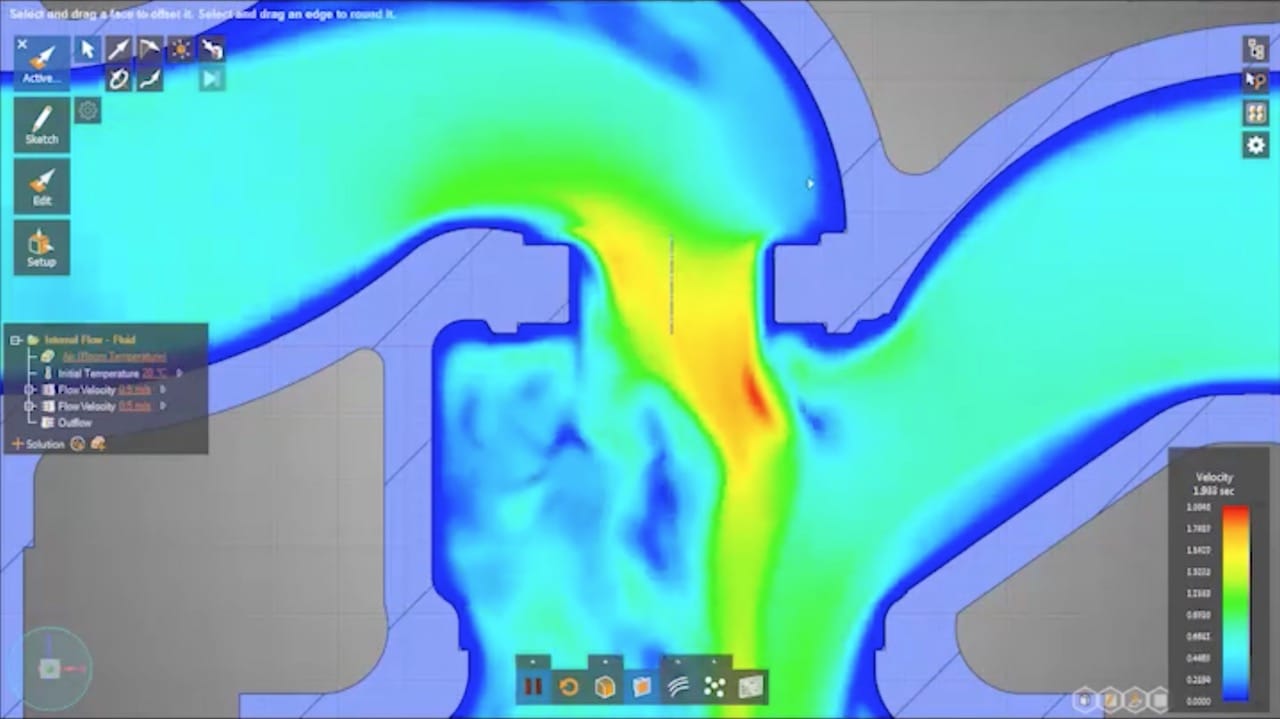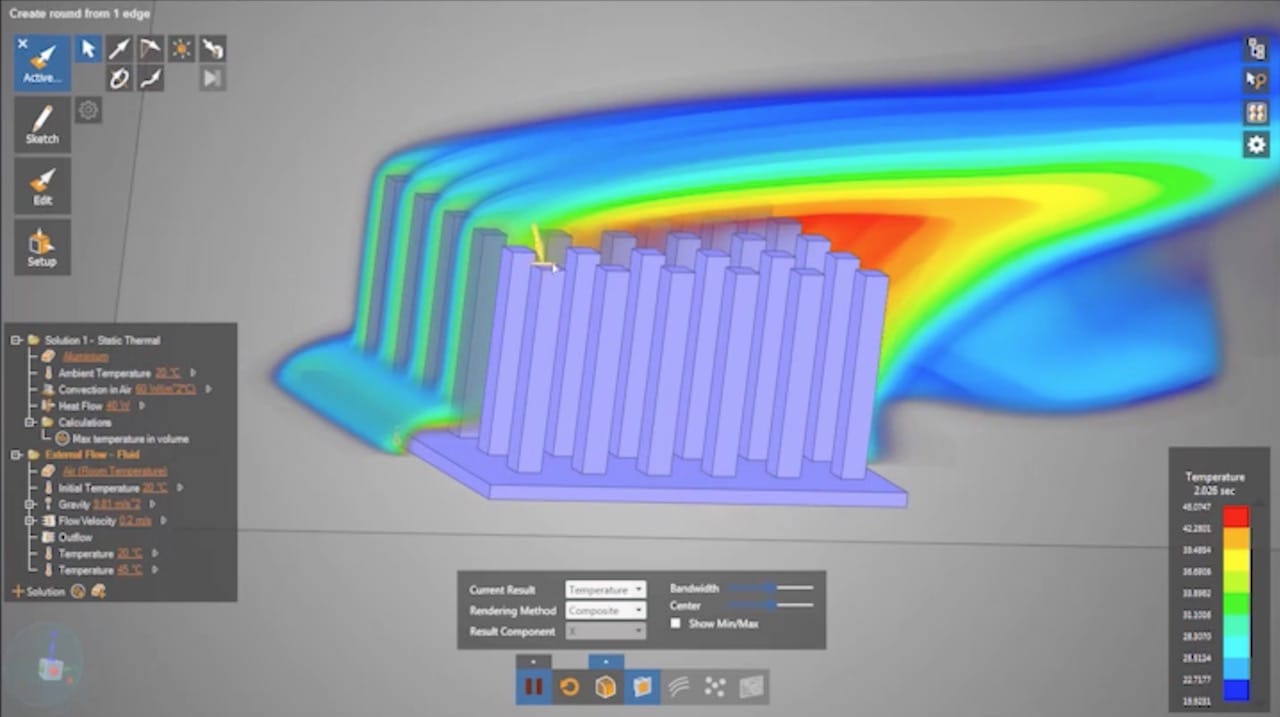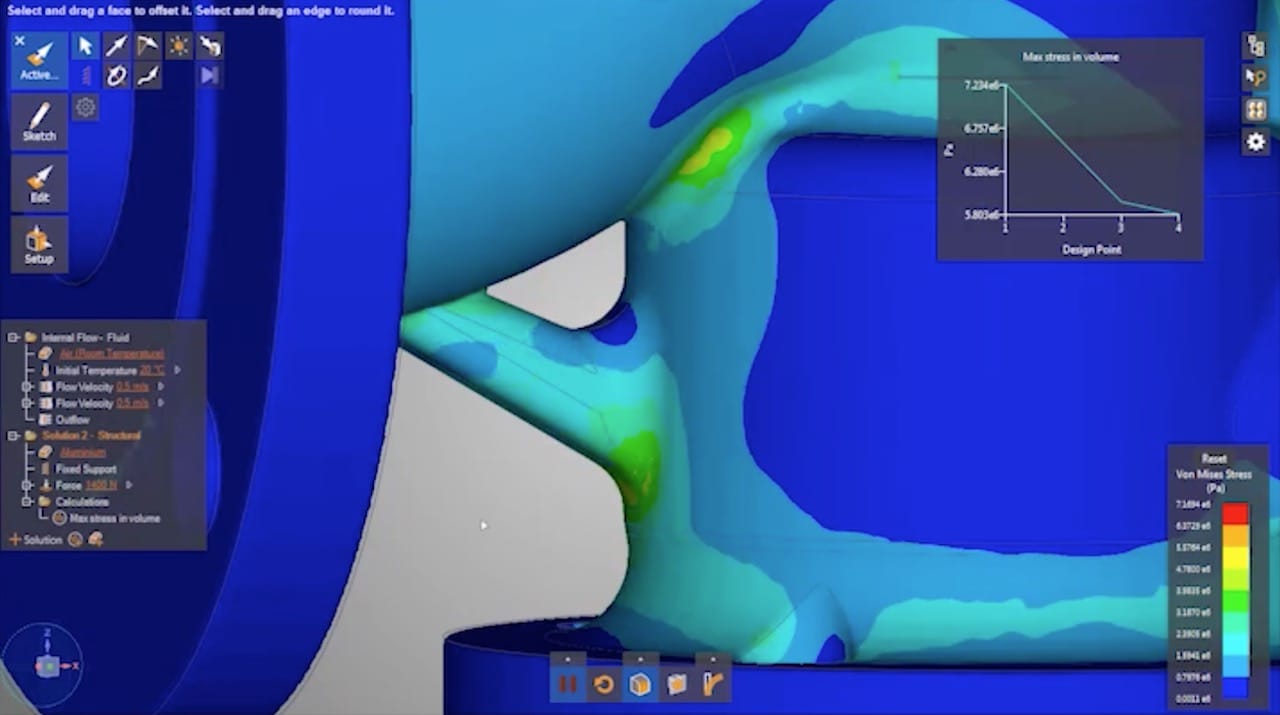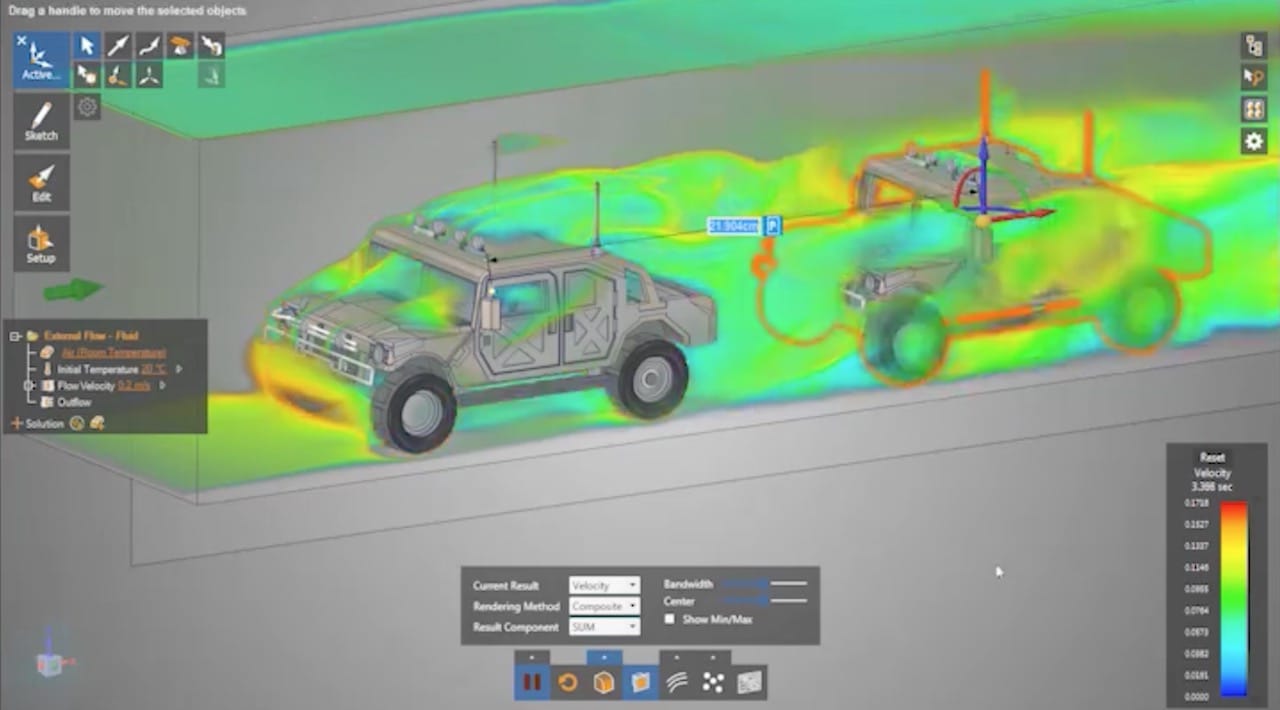
ANSYS today announced a new product, Discovery Live, which provides astonishing real time engineering simulations.
Simulation is a method of computationally testing a design against specified constraints. It’s typically used to gauge the effectiveness of a particular design in simulated operating conditions in order to ensure the part will function and survive.
But there’s always been a problem with simulation: it takes too long. Typically a “simulation run” might take hours or sometimes even days to complete, and would be offered by speciality niche engineering packages.
Another typical challenge with simulation is the learning curve: it can take substantial effort to understand how it works and set up a specific simulation run. And of course, you must do that correctly before commencing a long running simulation.
The long delays and challenges in implementing simulation meant that sometimes it was avoided by designers, or used only at the end of the process to certify the design.
Now that could change significantly with the introduction of ANSYS’ new product, Discovery Live.
Discovery Live is not a new version of the company’s existing simulation products, nor is it a replacement for Spaceclaim. Instead it is considered to be an early “exploration” product where the initial designs can be simulated in an easy fashion.
And in real time.
Yes, real time. They have somehow figured out how to perform real time simulations!

How does this work? Evidently their algorithm significantly leverages the presence of huge banks of GPUs within graphic cards, which are far more powerful than the main CPU in desktop computers. Of course, this means that ANSYS Discovery Live will be usable only on machines equipped with a suitable graphics card.
This means that your design can not only be evaluated instantly, but you can CHANGE it DURING the simulation!

Add a new strut, as shown here, and the analysis will instantly adjust to account for the new structure.
Similarly, the simulation can be done with dynamic fluid flow as well. You can, for example, set up a simulated wind tunnel to evaluate airflow over a shape.
But again, this is in real time. In this incredible example, you can copy and paste the vehicle, creating a second copy. Placing it behind the first vehicle instantly simulates airflow over a two-vehicle convoy. I don’t think vehicle designers often do that type of simulation.

This could result in a significant change in how design occurs.
ANSYS suggests that the simulation can be activated WHILE you are creating the design. The real time effects can cause you to adjust the design as it is being created.
I find this extraordinarily interesting, as it has a strong parallel to the software practice of Test Driven Development, in which “tests” (or simulations) are created first, before any line of actual code is written. Then, as code is added, the tests, one by one, begin to “pass”. Eventually the code is completed when all the tests have been satisfied.
I’m wondering if the ability to do real time simulation could result in an analogous practice in 3D design? Could it dramatically raise the quality of parts as it did with software? We won’t know for quite a while, but it is a tantalizing possibility.
I should point out that the purpose of ANSYS Discovery Live is not to develop final 3D designs; instead it is intended as an initial step through which exploration of a solution space can occur. The real time capability makes it possible to test a wide variety of concepts before landing on the most promising option.
Then you can export the results to one of ANSYS’ several other 3D tools for further product development and more in-depth simulations. Of course, those won’t be in real time, but you get the idea of the process envisioned here.
The company suggests they will be releasing the first commercial versions in 2018Q1, but until then you are invited to download and test a beta version from their site.
Via ANSYS

